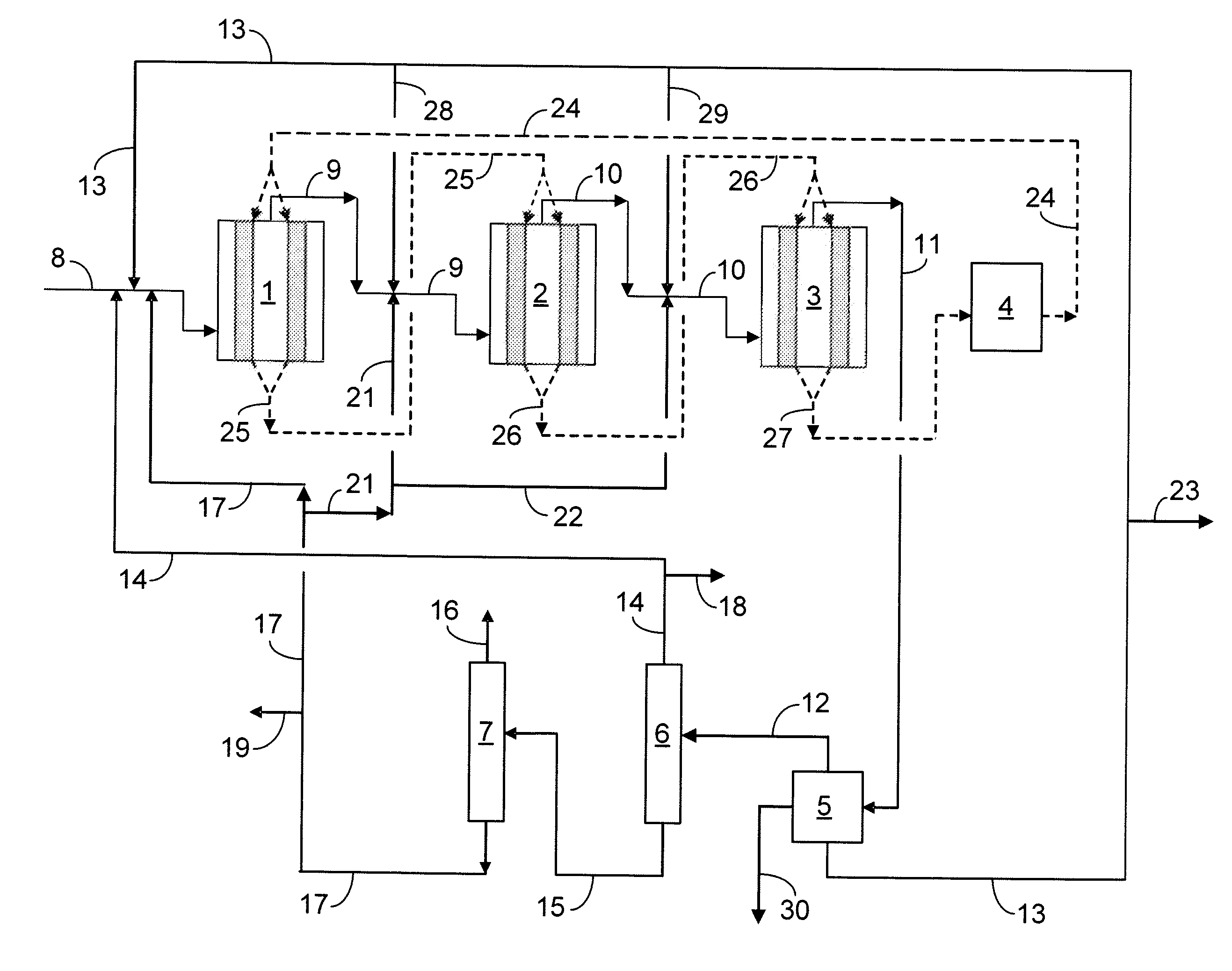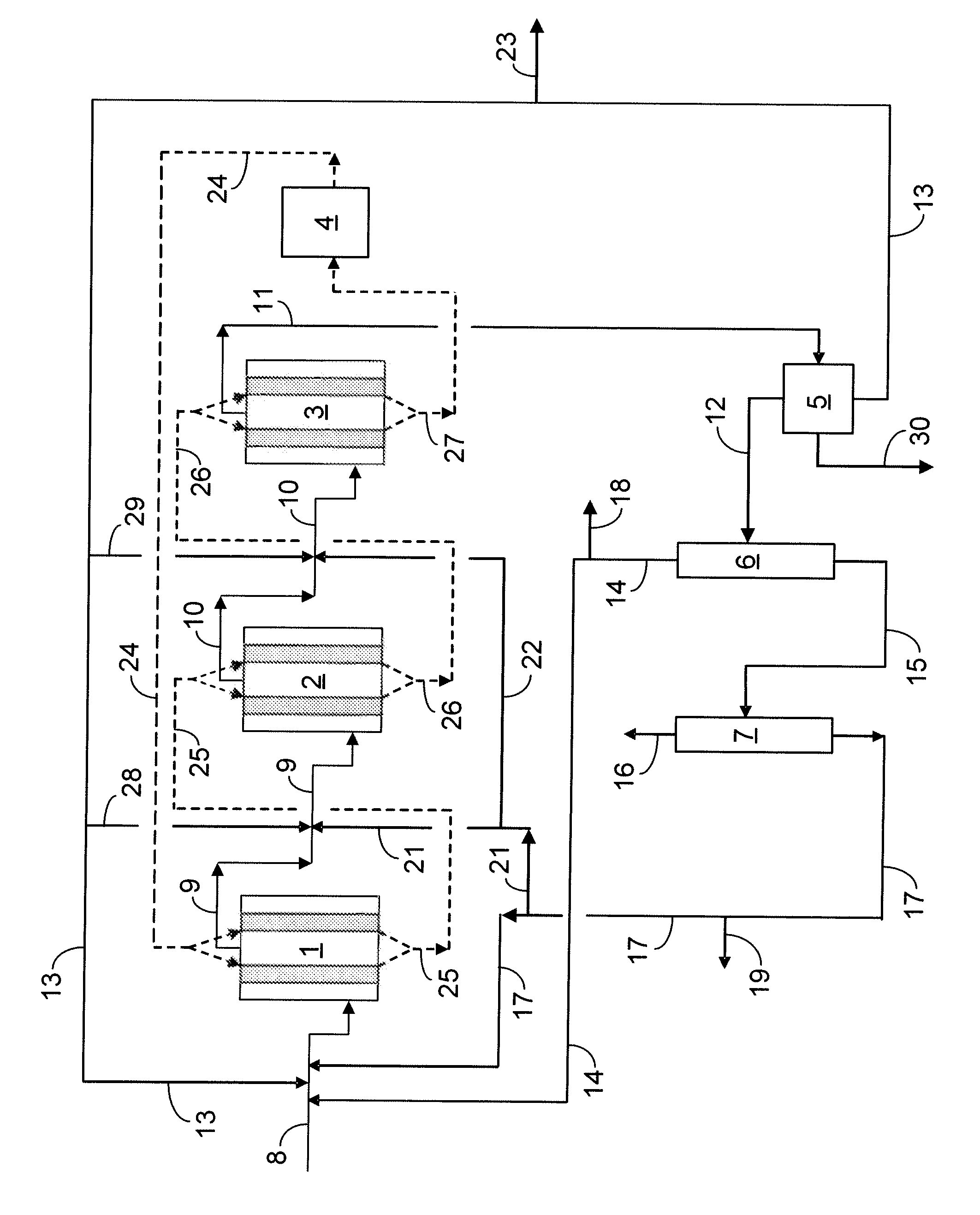Conversion of Dimethylether to Propylene using Moving Bed Technology
- Summary
- Abstract
- Description
- Claims
- Application Information
AI Technical Summary
Benefits of technology
Problems solved by technology
Method used
Image
Examples
Embodiment Construction
[0021]In the instant OTP process the feedstream comprises one or more oxygenates. The term “oxygenate” is employed herein to include alcohols, ethers, and carbonyl compounds (e.g. aldehydes, ketones, carboxylic acids, and the like). The oxygenate feedstock preferably contains at least one oxygen atom and about 1 to 10 carbon atoms and, and preferably, contains from about 1 to 4 carbon atoms. Suitable oxygenates include lower straight or branched chain alkanols, and their unsaturated counterparts. Representatives of suitable oxygenate compounds include methanol, dimethyl ether (DME), ethanol, diethyl ether, methylether, formaldehyde, dimethyl ketone, acetic acid, and mixtures thereof.
[0022]In the OTP conversion step of the present invention, the oxygenate feedstock is catalytically converted to hydrocarbons containing aliphatic moieties such as—but not limited to—methane, ethane, ethylene, propane, propylene, butylene, and limited amounts of other higher aliphatics by contacting the ...
PUM
| Property | Measurement | Unit |
|---|---|---|
| Time | aaaaa | aaaaa |
| Percent by mass | aaaaa | aaaaa |
| Percent by mass | aaaaa | aaaaa |
Abstract
Description
Claims
Application Information
 Login to View More
Login to View More - R&D
- Intellectual Property
- Life Sciences
- Materials
- Tech Scout
- Unparalleled Data Quality
- Higher Quality Content
- 60% Fewer Hallucinations
Browse by: Latest US Patents, China's latest patents, Technical Efficacy Thesaurus, Application Domain, Technology Topic, Popular Technical Reports.
© 2025 PatSnap. All rights reserved.Legal|Privacy policy|Modern Slavery Act Transparency Statement|Sitemap|About US| Contact US: help@patsnap.com


